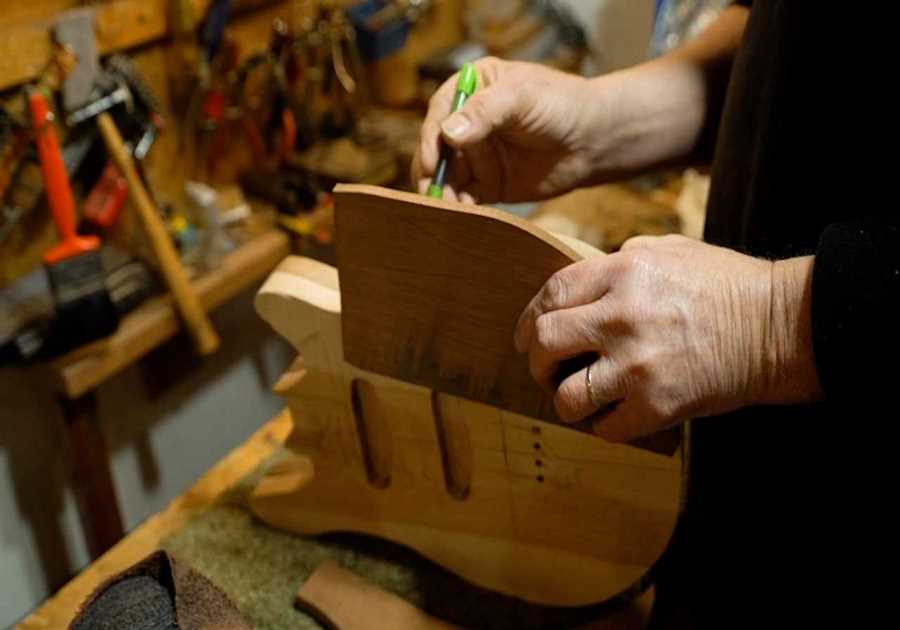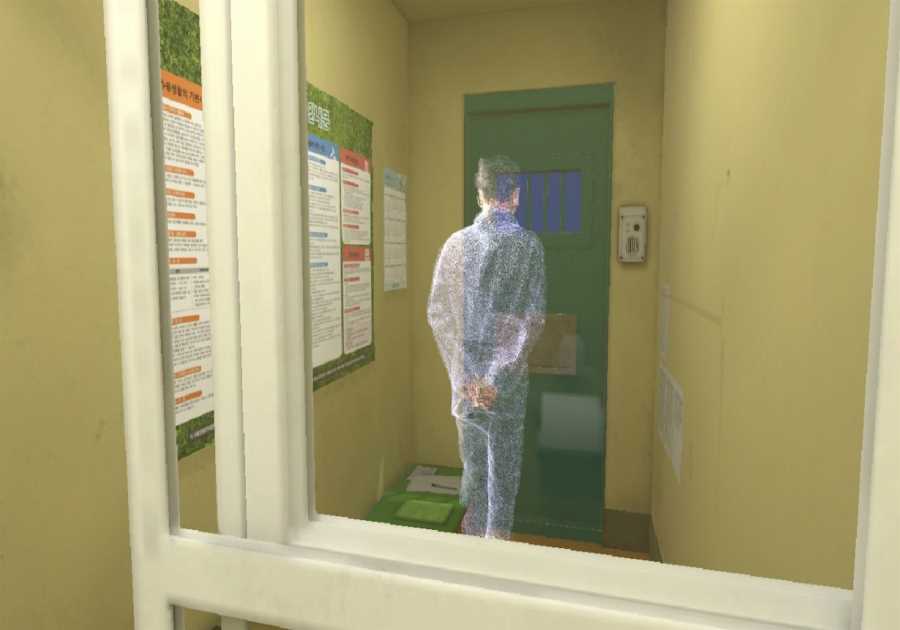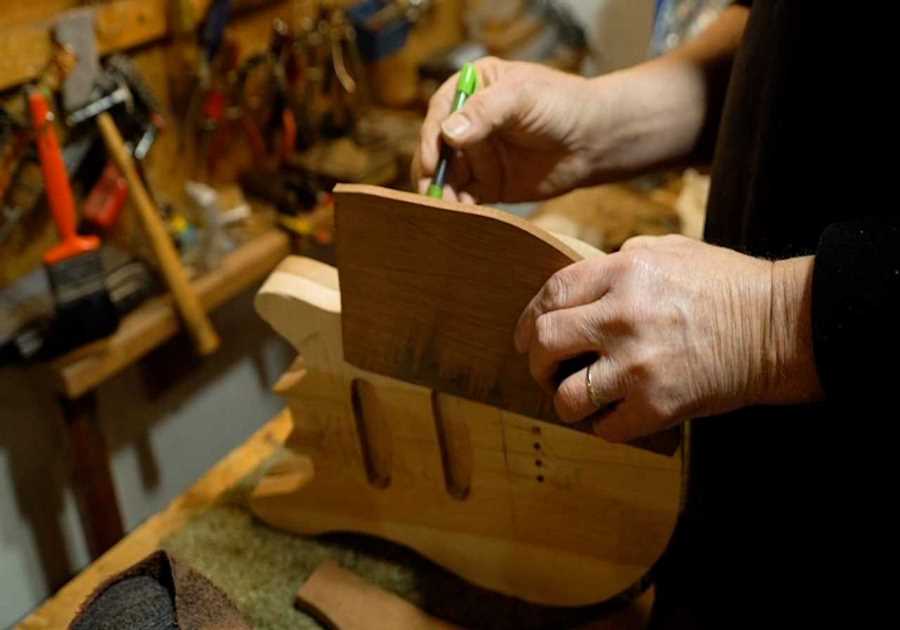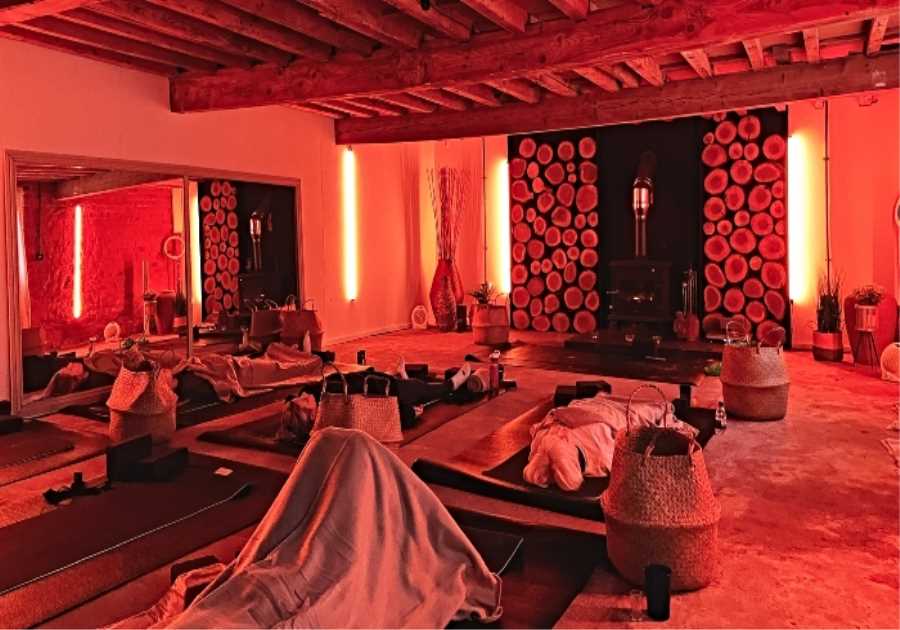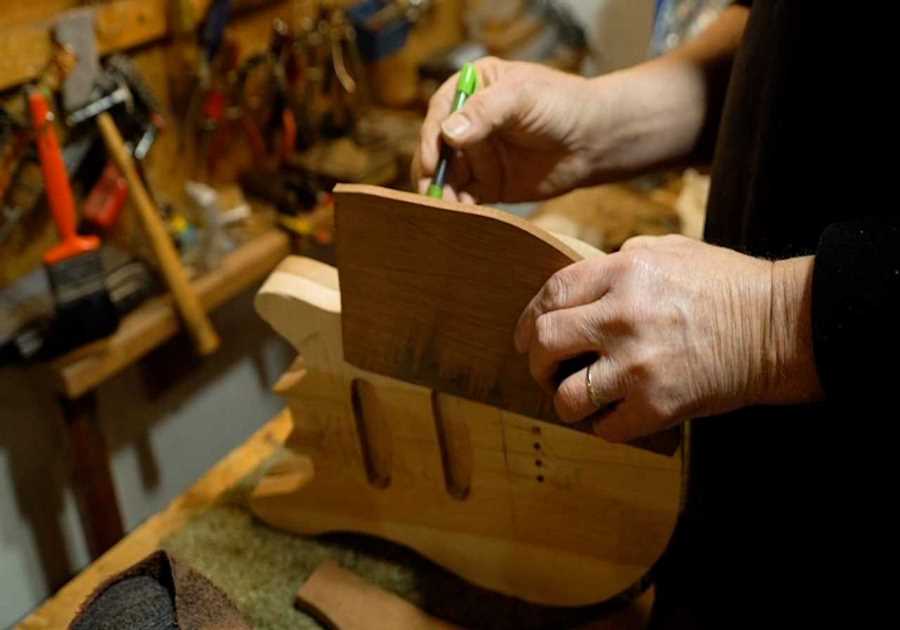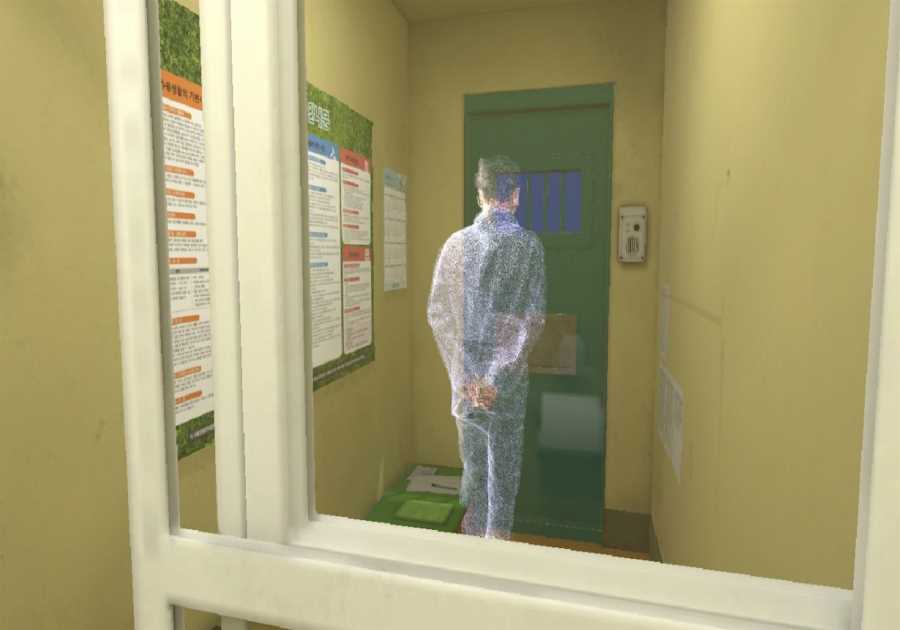It’s March 7th, 2020 and I’m at the Louisville Survival Expo & Gun Show, the last “prepper” event of its kind before the Covid-19 pandemic shuts the country down. The Kentucky Exposition Center is a sprawling 1.2 million square-foot facility also hosting a cattle show and a volleyball tournament this weekend, a holy American trinity of guns, beef, and sport. But the Louisville Survival Expo is billed as more than just a gun show. It advertises “a variety of vendors displaying guns, hunting supplies, camping gear, military surplus, tactical gear, solar power, long term food storage, and supplies for living off the grid.” Admission is $12, but I spring for the $14.50 VIP option, which allows me to skip the line.
There is no line.
On paper, I’m an unlikely attendee. I’m a fiction writer and a corporate historian. I was raised by two progressive Baltimore Jews, I went to Princeton, lived in Manhattan and San Francisco, campaigned for Hilary Clinton and Elizabeth Warren, and enjoy silent meditation retreats and ecstasy parties. What am I doing at a prepper show? A younger version of me would have wondered too.
After the publication of my debut novel — about a superhero end-times cult that forms in the escalating days of climate change — I embarked on a real-life preparedness project with my family on a woodland property just outside Charlottesville, Virginia. My wife, Kate, named our burgeoning homestead “Thunderbird Disco” — for an indigenous god of storms and for the fact that we like to party — but as our family grew, something shifted. Before kids, I’d never fully appreciated the animal, murderous impulse to protect one’s home and family. It’s not something the baby books warn you about.
During the summer of 2017, I got involved with the local chapter of Showing Up for Racial Justice, but had enough privilege and naïveté to presume the government would step in if anything went really sideways. Two weeks after my daughter was born, Nazis invaded our town, killing a young woman blocks from my wife’s office and the synagogue-preschool where my son spent his days. It changed things. Not so much a greater fear of white supremacists (though some of that), but the full realization that our institutions are flawed and fragile, and they will not save us.
Now, in March 2020, my ultimate aim is to get to a point where my family can survive — and thrive — entirely off the grid for one month. I don’t have some specific cataclysm in mind, I just don’t trust that electricity will always magically exist for us. A week before this expo, we finished installing a 6.8 kW solar array — a statement piece, so to speak, for our broader homesteading intentions. As a kid I’d devoured the wilderness survival books of Tom Brown, Jr., but in terms of the skills valued by modern preppers, I am starting my preparedness project with markedly zero of them. I know what I know, and I farm out the rest to service professionals. I enjoy yard work, but I have no knowledge of flora or fauna, no experience growing anything useful or edible. I can hang shelves and chainsaw a tree but not, like, well.
So, Kentucky is a research trip, kind of. Where better to learn survival skills than a survival expo? They’re hyping the educational angle on the expo website: “Vendors will also be available to teach you, answer your questions and help you find exactly what you’re looking for.”
But what am I looking for, exactly?
My interests trend more toward the food, energy, off-grid end of the prepper spectrum, and less toward bomb shelters, guns and ammo. Preppers, according to one of the few prepper academics, Bradley Garrett, are very generally people who “anticipate and actively attempt to adapt for what they see as probable or inevitable impending conditions of calamity, ranging from low-level crises to extinction-level events.”
A January 2020 survey determined that about 55 percent of American adults spend money on survival supplies, but this statistic includes folks with extra canned goods in the pantry or emergency savings in the bank. Research is scarce, but a more accurate number for committed survivalists may be around 4 to 10 million Americans. And many people keep their preps secret, so who knows.
Extent of prepping is often measured by money spent: on survival materials, home renovations, means of evacuation, and stockpiling stuff. Which brings me to what I see as one of the major fault lines in the prepper community: do we build bunkers and stockpile resources to protect ourselves, or do we share skills and build community to help each other? Isolation or cooperation? My theory — the one I’m using in my own off-grid experiment — is that skills are more valuable than stuff. The opportunity to learn from eager vendors is a chance to test this hypothesis, as well as my commitment to non-violence. Because there are guns galore, and I’m coming with an open mind, willing to be sold on weapons.
Author Adam Nemett at the Louisville Survival Expo & Gun Show.
Adam Nemett
We arrive at the Expo Center’s South Hall, a high-ceilinged cinderblock box. With me on this voyage are my cousin Jason Dressel and our buddy John Borgquist, laden with cameras and bags of gear for a documentary he’s filming about bumbling would-be preppers like myself. We’re also hoping to interview a survivalist named Bob Gaskin. If this is to be our own version of floating down the river into the heart of American darkness, he is our Colonel Kurtz. Gaskin is the owner of a preparedness business, MRE Nation, as well as Black Dog Survival School, and a half dozen other enterprises. Today, he’s scheduled to deliver the expo’s keynote address, titled “Society Ending Events.”
The date of his lecture is important: On March 8th there are 539 known cases of Covid-19 in the United States. Two days ago, Kentucky confirmed its first case, and yesterday, Italy went into quarantine. Tomorrow, Monday morning, a market free fall will trip a Wall Street circuit breaker, and by Friday the 13th, we’ll be in national lockdown. But this is Sunday, and these events seem worlds away, implausible. We still have tickets to see Grateful Dead guitarist Bob Weir at the Louisville Palace Theater tonight. (This is not part of the research trip. We just figure hippie Bob will be a necessary palate cleanser after prepper Bob.)
Once inside, I count maybe 50 booths and 100 attendees, what feels like a paltry showing. The crowd is sparse but diverse. There are black and brown people, there are women, there are infants in strollers. It’s quiet. No PA announcements or background muzak. Only the babbles of babies, and the occasional zap of tasers being tested.
Despite the varied lot of consumers, the purveyors are homogenous. Maybe 90 percent of the vendors are white men selling guns or knives, with about 5 percent selling survival-adjacent items — emergency food, explosives, infantry manuals, army surplus gear. The remaining five percent are nonsensical outliers peddling rain gutters, homemade jewelry or Amway. Approximately 100 percent of the vendors sell Confederate flag merchandise, despite the fact that, officially, the Expo Center prohibits their sale. And since we’re on the subject, the hallmarks of Trumpism and its close cousins are all on display. MAGA-branded goods abound. Several tables feature Nazi flags and other swastika-laden paraphernalia — sold as “World War II memorabilia,” though it’s hard to find similar-era U.S. dog tags or, say, Japanese katanas.
I spot Gaskin across the Expo Center. Operating at his booth, Bob is a 49-year-old smoker who looks about 63, wearing baggy cargo sweatpants and a hoodie, a set of polarized sport sunglasses on top of close-cropped gray hair. On Saturday, I try to corral him for an interview, but he’s in perpetual motion.
A quick glossary: MREs (Meals, Ready-to-Eat) are shrink-packed food rations typically issued by the military, and a mainstay item for some preppers. Saturated with sodium, they’re like canned goods light enough to stuff in a Bug-Out Bag (a BOB), which is a portable 72-hour survival kit that preppers stash in cars or at work in case we need to swiftly evacuate (bug-out) rather than shelter-in-place (bug-in).
I watch as Gaskin sells thousands of dollars of product, stacking and carting boxes to a loading area where he fills flatbeds and U-Hauls driven by men in tactical gear. As he ferries these items back and forth, I notice he’s holding the metal dolly handle with the sleeve of his hoodie, his fingers protected by the fabric. I’ve heard about this thing called coronavirus, and rightly assume Bob is attempting to avoid germs. (He isn’t wearing a mask; nobody is. It’s March 8th.)
When I present him with my elbow to bump, this earns me some street cred. We make a plan that we’ll film his “Society Ending Events” event later today, and then we’ll talk after.
While I wait, I shop. John’s cameras-on-tripods mark us as interlopers or, worse, journalists. Some of the sellers are understandably wary of talking with us. One pyrotechnics vendor speaks with me at length, mostly about chemtrails, but refuses to give his name because his associate was featured in a recent Popular Science article and subsequently rounded up by the FBI. The guy wears a black T-shirt with white block letters: SOME PEOPLE ARE STILL ALIVE SIMPLY BECAUSE IT’S AGAINST THE LAW TO KILL THEM.
Of the handful of non-weaponry booths, the one most in line with my survival research is Aftershock Preparedness, run by Teri Whisenhunt. Teri is a small but sure Iowan, a rancher’s wife, legally blind from a botched eye surgery. She’s a pro. A veteran of the prepper show circuit, her booth is sprawling with row after row of black mylar zipper bags, the packaging you might find if buying weed in larger quantities.
The bags of dehydrated food — from the unfortunately labeled “Milk Bucket,” containing 126 servings of powdered dairy, to emergency meal pouches including gluten-free Korean BBQ — are a more colorful take on drab military-grade MREs. High in calories, real meat, just add water and cook.
The banner above Teri’s booth displays her company logo. It’s a lone, withered tree against a blackened sky, with a lightning bolt striking the parched desert earth around it. Her trademarked slogan is: ACCEPTING REALITY.
I ask her what the tagline means. What is reality, these days?
“Get off your asses in Lexington and Louisville,” she says. “Go out and drive through Appalachia. When those coal mines closed, they couldn’t just up and move away from their families, they couldn’t sell their houses, because who was going to buy them, right?”
“See, I want you to eat every day,” Teri tells me over and over again. If you’re one of the 34 million people in the United States currently living in poverty, her dehydrated meals are an economical and shelf-stable way to feed a family. The larger kits equate to about $1.10 per serving. Those living day-to-day may be survivalists by default, but they cannot afford to build bunkers and outfit them with years’ worth of provisions. Teri explains that now when she does flea markets or gun shows, people ask if she’ll take an EBT (the card-based distribution of food stamps). “I had a lady ask me today, so I just gave her 10 bags for free,” she says. “She was worried, with the coronavirus, since her food stamps don’t go that far.”
When I ask if Teri’s worried about the coronavirus, she swipes her hand, calls it “a big damn hoax.” But her focus on the EBT consumer speaks to two more fault lines in modern prepperdom: the first is the distinction that it’s not “the end of the world” we’re prepping for; it’s The End of the World As We Know It, abbreviated as TEOTWAWKI. If the globe explodes in one cataclysmic burst, no amount of MREs is going to do anyone any good. TEOTWAWKI is about adapting to a seismic shift in human existence (but a survivable one), perhaps globally but certainly on a local scale. In this sense, many communities around the world have already experienced, or are actively experiencing, an apocalypse. From Damascus to coal country, The World As They’ve Known It has already ceased to exist. People are not preparing for what might occur. They are Accepting Reality.
Because a second fault line of preparedness is that most apocalypses are slow and subtle. We’re trained by movies and TV to envision TEOTWAWKI as a sudden catastrophe — a meteor or nuclear bomb or snap of Thanos’ fingers upending our world in one brutal instant. Preppers refer to this as the moment when the Shit Hits The Fan (SHTF; we love acronyms). The more likely and typical scenario is a gradual erosion of systems and norms over the course of months or years or decades. Zoom out to the millennial timeline and it appears sudden. But living through it is closer to the frog-in-a-boiling-pot experience. Storefronts and factories slowly close. Corruption or disease seeps in. Thermometers tick upwards in imperceptible hundredths of degrees.
We talk, and Teri is unafraid. She’s survived heart attacks and blindness. She’ll be “feeding worms,” she says, before her 25-year shelf-life products expire. I ask her if she knows Bob Gaskin.
“He sells fear,” she tells me. I buy some meal kits from her and she talks me through her ready-made Bug-Out Bags, filled with fire starters, folding stoves, fishhooks, filet knives, ponchos and tarps, all Tetrised into small backpacks adorned in either green camo or pink Hello Kitty graphics.
“If you’re on the move and get stopped, they’ll take your bag if it looks like it’s got resources in it,” she says. “But if this pink thing is on your kid, they’re gonna think it’s got Fruit Loops and playing cards, nobody’ll take it. Still, most guys are stupid and buy the camo one, just because it looks cool.”
I buy the camo one.
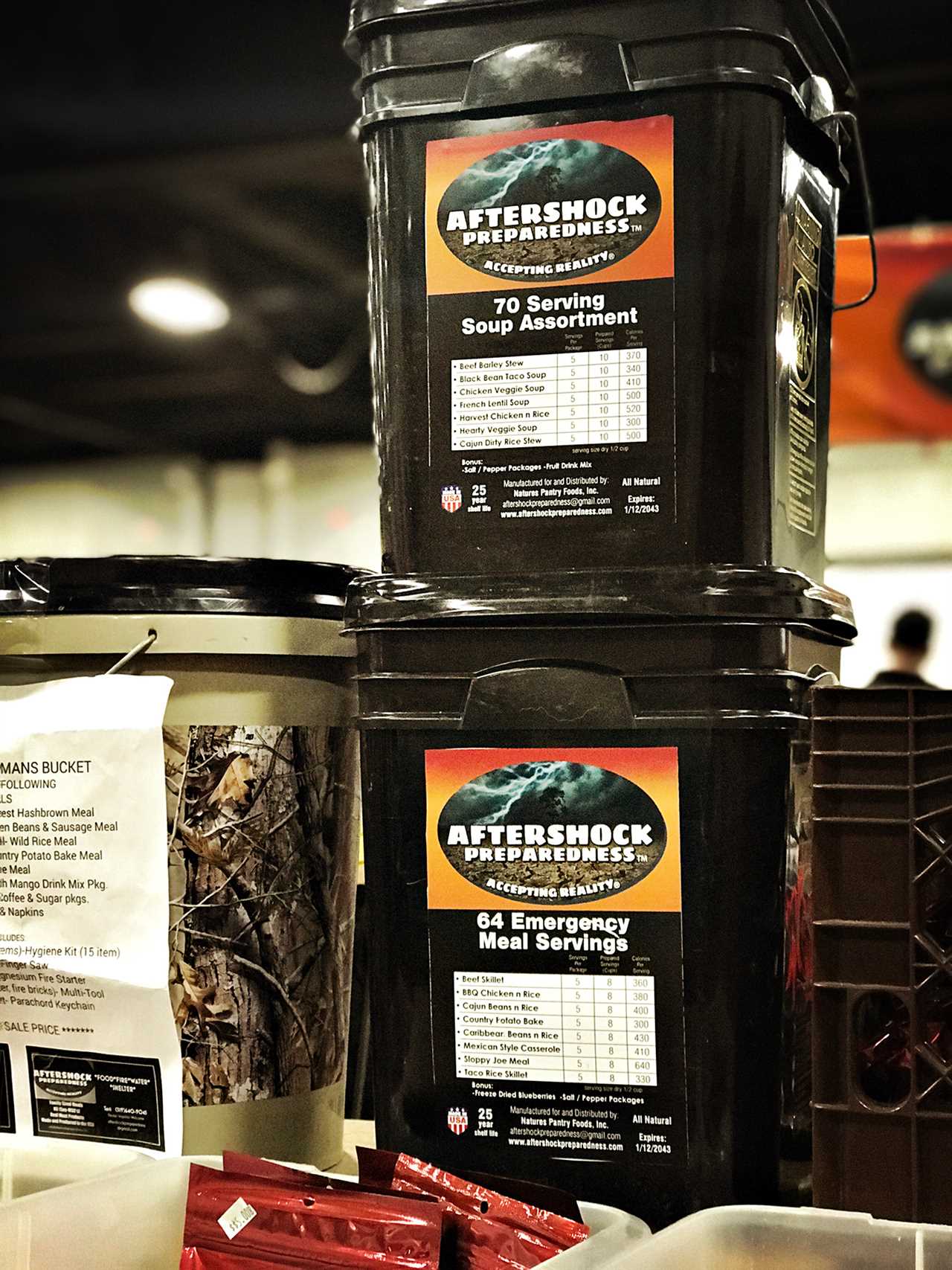
Bins of Aftershock Preparedness’ emergency meals.
Adam Nemett
I do shop for guns, too. Firearm dealers lay out their wares in endless rows next to wry signage (“Beto O’Rourke’s Gun Show Specials!”) and, gun-curious, I lean in and squint my eyes as if I really know what I’m looking for. The guns are all loosely secured to the tables by long, white plastic zip ties — like a bear leash made of dental floss — and when sellers press me to hold the weapons, to get a feel for ‘em, the guns feel stupid in my hands. The Ruger Rimfires and CZ 75 pistols remind me of Clue’s lead pipe — weapons better for bludgeoning than shooting; and the Glocks are more toy-like than I imagine them to be, like plastic arcade facsimiles.
When I pick up a featherweight Walther PPS M2, another show-goer asks if I’m looking for something for my wife. Sick burn, dude. But he’s serious, and proceeds to run down all the specs that make this the particular weapon he gifted to his girlfriend for everyday use, a little something for her purse.
I’m officially out of my element.
So, on Sunday afternoon when Bob Gaskin finally steps through the thin red pipe-and-drape to speak on “Society Ending Events,” I’m ready to listen. Gaskin laments that he doesn’t even have a microphone and doesn’t need one anyway since only 12 people bothered to show up.
Besides myself, Jason, and John, also in attendance is our new friend Chris Begley — survivalist, archeologist, all-around badass, associate professor at Lexington’s Transylvania University, and author of, among other things, a post-apocalyptic op-ed in the Lexington Herald-Leader that led to his forthcoming book, The Next Apocalypse: The Art and Science of Survival. Chris has brought along his daughter Bella, who still thinks she’ll get to graduate high school in person this year like a normal kid.
Bob asks all 12 of us to move up from our spaced-out folding chairs but to “please maintain a meter social distancing,” which feels like a parlor trick. He’s used to speaking in front of thousands, he wants us to know. Most other prepper shows are better than this one.
“Where are all the other prepper shows?” asks a 70-something gentleman in the sort-of-audience.
“They used to be all over the place!” Bob says. “And then Donald Trump won, so the conservatives stopped going to prepper shows because they were no longer afraid of the other guy [Obama]. And then all of the liberals became afraid of the new guy [Trump]. But none of the promoters realized ‘Hey, there’s more preppers in the liberal states now, so let’s just change the way we do things.’ So now there’s no more prepper shows!”
I find this response remarkably self-aware. And validating. For over a year I’ve tried to locate a prepper show within reasonable driving distance of Charlottesville and come up empty. Websites are defunct or haven’t been updated since 2018. Some, like PrepperCon, announced indefinite hiatuses. I hadn’t considered that these events were simply being marketed to the wrong target demo.
Data shows that prepper conventions have indeed dwindled. In a 2014 ethnographic study, about 90 percent of the subjects identified as right-wing, conservative, Republican or Libertarian, taking precautions for the inevitable Obamageddon. Since Trump’s inauguration, “prepping has taken a dive nationwide,” according to Business Insider. Liberal prepper networks have cropped up, including a Facebook group with more than two thousand members. But clearly the preparedness industry does better with a Democrat in the White House.
Gaskin lays out his credentials. Various books, certifications, and military service. “I may not be the Michael Jordan of the preparedness industry,” he says. “But I’m definitely the Charles Barkley.” He runs the largest prepper group east of the Mississippi River, he says. Over 280 families and another 160-some-odd individuals. “We occupy an entire mountaintop, and by the way, you are all welcome to come,” he tells us. “All of you. Every one of you.”
He gives us directions to his place in Tennessee, which is disarming, since most preppers wouldn’t dare disclose their location. “Show up with everything you own or with the clothes on your back. We have food, water, fire, first aid, and shelter for you and your family for at least a year. We have a job for you. Our community is open to anybody, I don’t care if you’re black, white, male, female, young, old, Muslim, Christian, Jew, Buddhist, Atheist. The only way you can rebuild Society after a Society-Ending Event is if you have people to help you rebuild it. Right? You all with me?”
We nod. We are with him.
You all with me and You follow me are refrains in Bob’s talk. At face value he’s just trying to ensure we’re awake and processing, but it reminds me of how Trump says, “We love X, don’t we?” when he wants us to love X, or “It’s true, it’s true,” when it’s definitely false. With words like follow dappled throughout his language, I wonder if Gaskin has that common prepper desire: to be exalted as a prophet.
On the subject of prophecy, Bob then launches into Covid. He says he’s predicted a dozen other major disasters, timestamped on social media, and after learning about the novel coronavirus a few weeks ago, on January 17th to be exact, he very quickly realized it’s a problem. He walks us through the different strains, the lengthy incubation periods, the asymptomatic carriers, all the things eventually accepted as scientific fact by those who still accept scientific facts. But at the time, I certainly don’t buy it.
He predicts runs on toilet paper, but also claims that in three weeks, schools will be closed and we won’t be able to find galvanized screws or PVC because their base ingredients are manufactured in China. So many products — from pharmaceutical chemicals to Smithfield Foods — are derived from Chinese manufacturing or Chinese-owned conglomerates, he tells us, so pretty soon there will be no more medicine or ham. These are worrisome, because Kate had thyroid cancer and takes a pill every morning to regulate her endocrine system. And because I like ham.
I breathe. I remind myself of Teri’s warning: Bob Gaskin sells fear. But it’s subtly working. I’m wondering whether I have any business going to that Bob Weir show tonight.
I’m also calculating how much food we have on hand back in Charlottesville. Gaskin is a natural salesman — maybe a snake oil salesman, but a good one nonetheless — and I anticipate his inevitable pitch for MREs. But this hard-sell never comes.
Without notes or visual aids, Bob continues to speak about Covid for the next 90 minutes, citing statistics, timelines, percentages, not only about the disease itself but its far-reaching effects on a dozen other industries. He makes predictions without couching them as such — just saying what’s going to happen. And some of these, we’ll soon realize, come true. Some don’t. Here’s the one that will come most true:
“On the other side of this, the United States will be the worst country in the world.”
All other countries will recover before the U.S., he says, because the communists, socialists and religious totalitarian countries can force their citizens to lock down. And people will listen, for fear of punishment and for the greater good.
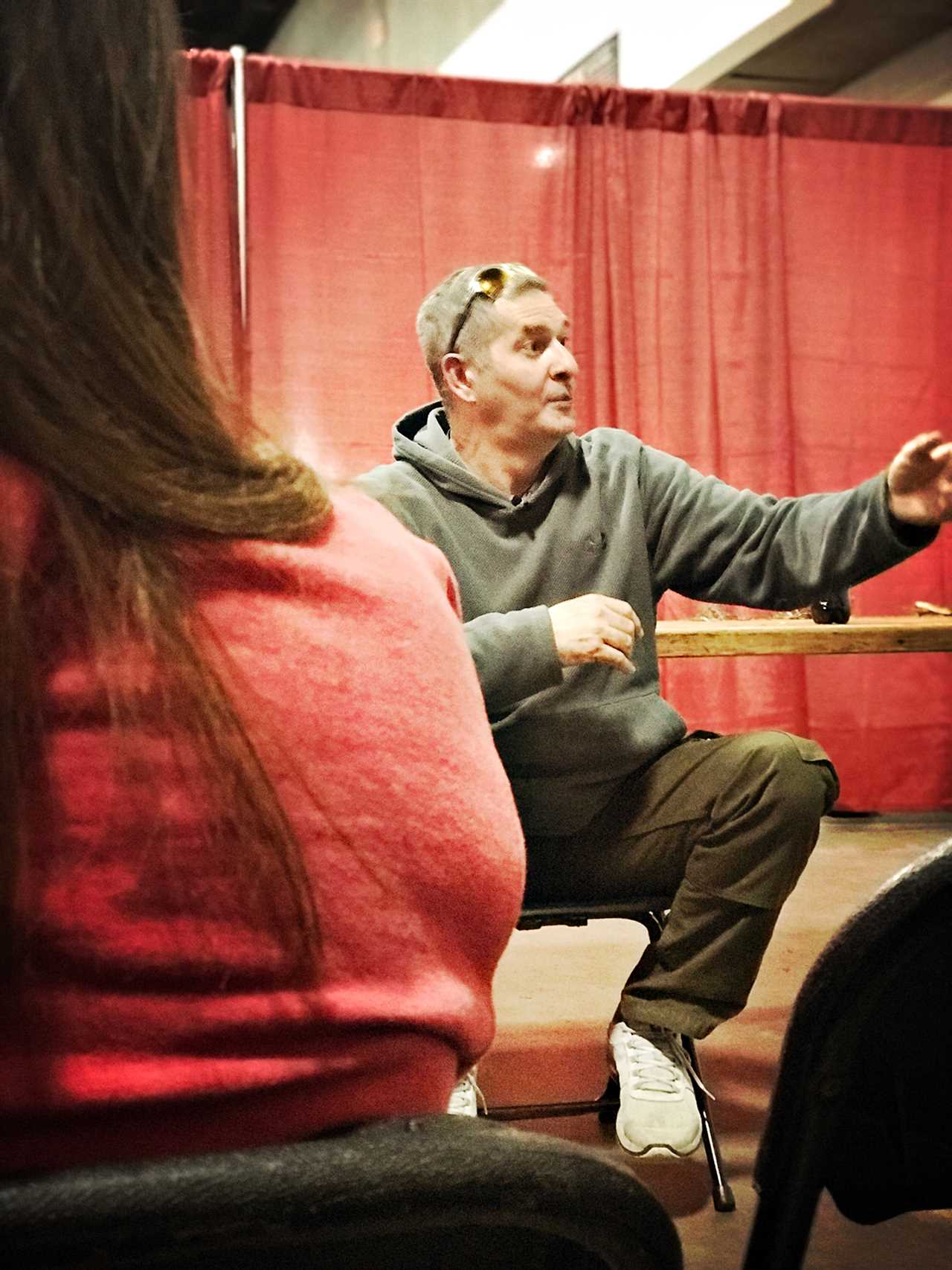
Bob Gaskin speaks to an audience in Louisville.
Adam Nemett
“Us?” he continues. “Two weeks from now when President Trump announces that in 26 cities, all schools and public gatherings are prohibited including libraries, community centers, churches [he locks eyes with each of us, for emphasis]…when that happens, We the American people will stand up and say ‘Oh, nay nay!’ Folks, we’ll have church in my front yard. Let the government see us, it’s our right as an American!”
“We’re better than the Communists because we have these rights and freedoms,” he continues. “But these freedoms cause us to be extremely greedy and selfish people. You with me so far?”
After an hour of Bob’s horrifying pandemic predictions and general fealty to our President, whom he calls “Big Daddy Donald,” Jason asks why Trump says the media is blowing Covid out of proportion.
“It has been blown out of proportion by the media, I agree with him!” Gaskin says. “While at the same time it’s been downplayed by the media,” he continues, recalling the thesis of his entire lecture.
“Well, Trump’s downplaying it, isn’t he?”
“Yes, he is, do you know why? Because he’s lost his job. He’s kissing his children and telling them he loves them and there’s nothing to worry about. And then one day soon, we’re going to come home from school to see a U-Haul in the driveway because we’ve been foreclosed on. I think he’s trying to minimize the panic, because that’s when the situation goes from ‘Hmm, there may be a problem’ to ‘Holy shitbags, all hope is lost!’”
For a man preaching the importance of preparedness, this capitulation is Gaskin’s biggest tell.
But Bob returns to predictions — that 2.8 billion people will be infected by the end of March (false; only about 84 million infections worldwide by year’s end), that we’ll be in a global recession by May (true), that by July we’ll hit 55 percent unemployment (false; only 10.2 percent, down from an April high of 14.7 percent), and that because of all of the above, Biden will win the election (true).
“SARS-2-CoV-19 is to the human race what an asteroid was to the dinosaurs,” he tells us. “Now, how many of you think I’m full of shit?”
“Half and half,” I wager.
I say this out loud because I’m playing to John’s cameras and imagine Bob’s reaction will be revealing or at least entertaining (false; he doesn’t take the bait) and because I’m kind of a dick sometimes (true). But also, it’s what I legitimately believe. There’s plenty of fear-based speculation in his talk, but much appears based in fact, or at least highly plausible. And, as we now know, Gaskin is half full of not shit.
The next morning, John wakes us up. He’s a filmmaker but also writes high-end marketing content for financial services companies. He follows the markets and sees that they’ve cratered. We should pack and get home as soon as possible, he says.
By the time we return from Louisville, I am already accepting reality. I do my Costco run, amassing a couple months of food and provisions for my family. I get a haircut. I stockpile dimensional lumber, galvanized screws, and tools I don’t yet know how to use, in the event that we’ll need to build raised garden beds to grow our own food. Or maybe we can barter these items for thyroid medicine.
We’d been planning our preparedness project in a casual way. It was dumb luck timing that our solar panels went live on March 3rd, and now it’s high time to step on the gas. As predicted, Kate is furloughed and my kids’ schools close, so March and April become our Stay-at-Homesteading phase, a period of family adaptation to the new normal, where building, growing and fixing things become a form of homeschooling for my five- and two-year-old. We take our minds off global fear by focusing on our proximate world.
And throughout the pandemic, Jason, John, and I repeatedly read yet another article and text each other something like, “Welp, I guess Bob was right again.” Later, shorthanded as: “Fucking Bob.”
In late September, I finally read Gaskin’s self-published book Society Ending Events: The First 180 Days, which I purchased back in March but was too scared to read until now, exactly 180 days later. Released in 2013, the book’s premise is built around the aftermath of an electromagnetic pulse (EMP) — a calculated strike from an enemy combatant or a naturally occurring solar flare that fries electrical circuits and destroys the grid — not a global pandemic. EMPs are one of the “sudden” TEOTWAWKI boogeymen feared by preppers, but with the election a month away and violence in the streets, Bob’s book feels eerily relevant. After elevating and/or debunking some conspiracy theories in sections cut-and-pasted from Wikipedia, Gaskin takes us through the Five Stages of Preparedness:
1) Realizing the Fragility of Society, 2) Fearful Purchasing, 3) Structured Preparation
Yup. With you so far, Bob.
4) Expert Level is when “we realize we no longer need to be part of someone else’s group and under their authority, so we set out to start our own group.”
5) The Danger Zone, characterized by “people who are actually looking forward to the SHTF.” Bob warns us that in all the apocalyptic books and films and TV and video games we consume, the main character usually survives, which gives us a false vision. “This is what I call the ‘Rambo’ affect [sic],” he writes. “We begin to think that since we have prepared for this, we will survive. Unfortunately, we will not all survive. … By day one hundred and eighty-two, statistically, you would have watched your spouse, your children, and your entire family die.” Yikes!
But it makes sense from a psychological and a financial standpoint that Stage Fivers might welcome the apocalypse. It’s not cheap to be a committed prepper. Stockpiling involves tangible stuff — toys we want to play with. Imagine spending $10,000 or $100,000 or more than $1 million on stuff you never needed. If you’ve gone down this rabbit hole, the natural human tendency is to crave validation for all that time and expense. All this can’t be in vain, can it?
It’s October 10th, seven months after I first met him, and I’m on Zoom with Bob Gaskin. Trump has Covid, along with more than 30 people in the White House. A couple days ago, members of the “Wolverine Watchmen” militia were arrested by the FBI for plotting to kidnap and maybe execute the Governor of Michigan. The country logged more than 57,000 coronavirus cases yesterday, a two-month high, with more than 900 deaths.
I wanted a follow-up, I tell Bob, because of how right he was about this year. A solid ego-stroke. I also want to see if he’ll dress me down for saying he was half full of shit, or whether he’ll defer to Big Daddy Donald’s latest talking points about the media and scientists being full of shit. I want to see what the last seven months has done to him, psychologically and financially.

The author’s family homestead in May 2021.
Adam Nemett
Business has been good, he tells me, but he’s had to adapt. In March and April, each of his two MRE companies sold as much product per week as both companies combined sold in all of Q4 2019. They ran out of stock, and expenses skyrocketed to the point where they were paying two- to three-times more to source each MRE component — from entrees and drink mixes to breads and spreads.
In response, they developed their own product lines, and now they’re also a resource for their competitors that were closing their doors because they couldn’t get product. He was able to pivot because he predicted the food shortages back in February, and saw demand spiking as early as October 2019, when the Department of Defense doubled their typical MRE order. “Months before the coronavirus, they were preparing for something,” he says, ominously (true but misleading; a leading MRE supplier to the U.S. military confirmed that the DOD doubled their typical order way back in 2018, repeated this spend level in 2019, and actually tapered off slightly in 2020).
Then, Gaskin says, during a six-week period starting in early February 2020, non-DOD, non-emergency management agencies at the city, county, state, and federal level spent over $70 billion just on MREs, and repeated that spending cycle from July to September. All told, in the past one year these agencies spent more on freeze dried food and MREs than the entire U.S. military spent from 2001 to 2020 (a FOIA request for exact numbers went unanswered, but that same MRE supplier corroborated this 2020 explosion in emergency food spending across all government levels).
With this in mind, Gaskin updates his predictions. The global supply chain will fail around Christmas, leading to economic collapse, global war, another worse pandemic, the real SHTF moment somewhere around May 2021. Yet he backtracks on his (largely accurate) warnings about Covid.
“Imagine a virus so bad that you have to get a test to find out if you’ve even had it!” he scoffs. Yes, he wears a mask, he says, because if he has Covid, he doesn’t want to spread it to others. “But most people are too selfish to even do that!” he says.
“Well, some people are,” I offer.
I ask him about his comment in Louisville: that Trump is downplaying the virus like a caring dad simply “protecting” his family until the last possible moment, lest they panic. I mention my kids, now six and three years old, and how they helped with our prepping, how their preschool adapted to an outdoor “forest school” model where they wear masks all day and traipse through nature and seem happy as fuck.
“Kids can handle it, apparently,” I’m pleased to report. “So how does that square — the President not telling adults the truth because he thinks they’ll panic — with the idea of preparedness in general?”
He tells me I’m comparing apples and oranges, a Porsche versus a Hyundai. I’m not sure what he means.
“When I made that statement,” Gaskin says, “nobody knew anything about the virus. They didn’t know how bad it already was and how much worse it was going to be.”
“You knew about it on January 17th,” I remind him.
“Yeah, but they didn’t know it was already spreading!”
We steer to his book, and the survivor’s mindset. He references the post-apocalyptic S.M. Stirling fiction series “Dies the Fire,” where two years after The Event, tribal mini-societies have formed, each following the religion or belief system of the person that led their survival and adaptation. There’s a Norman fiefdom with lords and ladies; a Tolkien group that speaks Elvish; and Bob’s favorite character, a former Marine like him, builds a society based on the Norse gods.
Gaskin’s own post-Event society in Tennessee will be a Republic, he says, but clarifies that for the first year, it’s a dictatorship. His way or the highway. And then, once he’s established a firm, safe zone for his community and expanded their perimeter, they’ll hold open elections.
I don’t buy it. Dictators, by definition, don’t willingly cede power.
“What’s the endgame for you?” I ask. “Is it to just survive and keep your family fed? Is it to be the last man standing with a harem of women and you repopulate the Earth in your own image? Is it because you believe, ‘I have a better vision of what the world could be, and if you follow me, we’ll get there together?’”
“One of the reasons I started teaching seminars all over the country,” he says, “is that most people preach this mindset that your stockpile is all you’ll have after The Event, so you can’t help other people. They teach people to become selfish pricks. But the stranger that comes to you for help may be the one that gets the lights back on in your community, or the one whose grandson saves your daughter’s life 10 years from now. You don’t know…
“What I do know is it takes 18 years and nine months to replace an adult human. So, the biggest resource we‘re going to need for survival, and the most abundant resource that’s acquirable — our fellow man — is the one resource most preppers are not preparing to acquire. We’re going to lose doctors, teachers, preachers, sanitation engineers. People are going to die. And if we don’t replace them, those critical skills are gone. So, for me, for totally selfish reasons — the survival of my family — I have to be completely unselfish and help total strangers. You with me?”
I’m with him. But he didn’t answer my question, so I ask again: “What’s the endgame?”
“My goal,” he says, “is that 100 years after The Event, little Johnnie and little Susie and all my great-great-grandchildren are sitting in a school named after me, reading about me in the history books, after having lunch next to a statue of me in the front yard of the school…
“In order for them to do that,” he posits, “I have to be a founding father of that society. And in order to be a founding father, I have to have people that follow me. And people aren’t going to follow a man that kills people because he doesn’t have enough to help them.”
“Do you think that’s the prevailing vibe within the prepper community?” I ask. “Helping others?”
“Oh no. Lord, no. These people that think they’re gonna be an island in the midst of the storm, they will be the first to go,” he predicts. “The people that form a tightknit community are the ones that’re going to survive.”
It’s easy to chalk up Gaskin’s vision of himself — the savior and leader of a post-apocalyptic communal paradise — to delusions of grandeur. But he’s not the only one stepping into this role. Are Bob and other preparedness experts truly outliers, or are more people simply waking up to the notion of commonsense prepping and community-building? And, if so, how far has this notion spread?
Much has been made of billionaire bunkers and prepping’s new foothold in Silicon Valley, for instance, almost as a punchline. I remember back in Louisville, Chris Begley told me that, historically speaking, when civilizations collapse, elites fare poorly. “Pitchforks don’t come out for the farmers,” he’d said.
But for those in California — experiencing regular earthquakes and seasonal wildfires — and many other “elite” coastal regions hit by hurricanes and other natural disasters, prepping is neither theoretical nor pre-emptive, it is reactionary. It is accepting reality. Evacuating (bugging out) and sheltering-in-place (bugging in) are regular occurrences. Silicon Valley is also an epicenter of people paid to imagine possible futures — futures disrupted — and many of them, much like Gaskin, consider themselves stewards of that uncertain tomorrow.
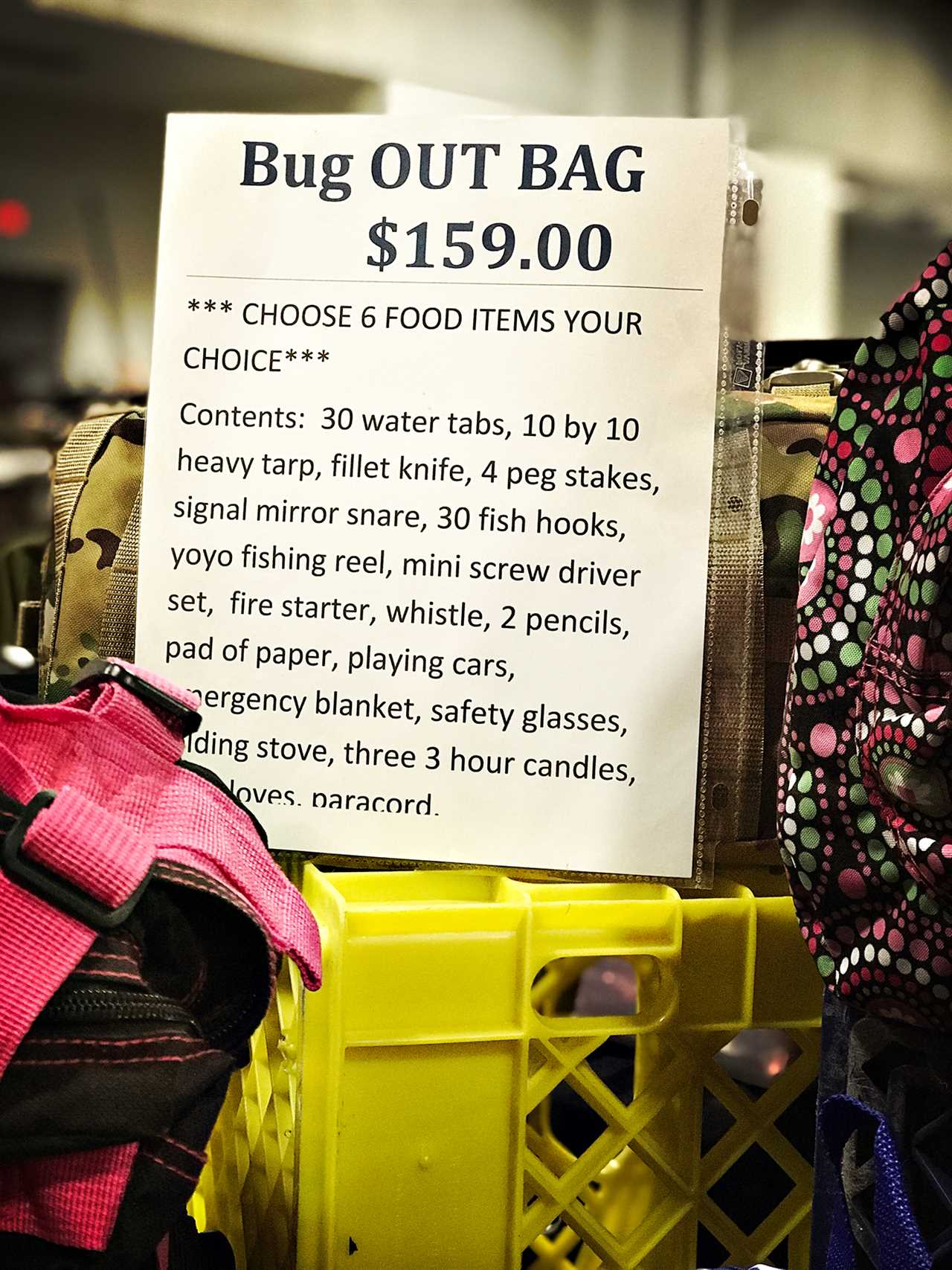
Bug-out-bags for sale in Louisville.
Adam Nemett
One of these is John Ramey, Founder and CEO of the website, The Prepared. A tech entrepreneur and angel investor, Ramey built three successful businesses and co-founded the Obama-era Pentagon’s Defense Innovation Unit, all prior to launching The Prepared in 2018.
The Prepared is part Consumer Reports (painstakingly rating and reviewing thousands of survival products), part skill-building advice blog (written by survival experts), and part apolitical manifesto (their Sane Prepping Mantra eschews government policies and conspiracy theories). In April, The New York Times called the site, “the voice of a movement.”
When I spoke to Ramey, he was somewhere in the Rocky Mountains capturing video for their educational series on Water Essentials. Like Gaskin, Ramey says Covid has been good for business — his site has seen a 25x growth since the onset of the pandemic. His exponentially increasing audience of “mainstream/modern/sane preppers,” is majority urban, affluent, educated, and female, with the largest age cohort being the 25 to 35 set. I ask him if this shift is purely due to Trump and Covid.
“It’s not that superficial,” Ramey clarifies. “Before Trump, a significant portion of preppers were not far-right extremists — they might be left, middle or apathetic. What’s changed is that they stopped being as closeted about it.”
The original prepper stigma — what Ramey refers to as “crazy forest hermits” — stems from the Obama years, which coincided with the financial crisis, the rise of the Tea Party, and the explosion of social media. “Extremist voices were the loudest in those megaphones, re-amplified by sensationalist media like the Doomsday Preppers TV show,” he remembers. “Now that Biden’s been elected, you’ll hear more noise on the fringes — survivalist boards again dominated by ‘the libtards are going to enact Sharia law!’ crap — but I’d argue those sites are for alt-right preppers to talk about anything, whereas The Prepared is a place for anyone to talk about prepping.”
Ramey was one of the first Silicon Valley types to be outed as a prepper, but he found many others secretly interested or already committed. They’d ask his advice — “How do I put together an emergency food kit?” or, more quietly, “So…what about guns?” — and his responses evolved into the comprehensive education and community forum of The Prepared.
In aggregate, by the end of 2020, prepping went mainstream. No longer exclusively found at gun shows or via Alex Jones and James Bakker call-in lines — you can now buy stocked Bug-Out Bags from Bed, Bath and Beyond; $3,000 pallets of emergency food from Costco; Oprah-endorsed designer preparedness kits (like Judy, Uncharted, and Preppi) via Instagram; and all of the above from Amazon (though no legit prepper would ever buy through Amazon).
So why do I still have such a hard time pulling the trigger on one of these purchases? I’m lucky enough to be in the position every month to spend about $1,000 on insurances (auto, home, life, health, dental, vision) and to sock away another $1,000 or so on retirement and savings accounts (financial vehicles yielding intangible peace-of-mind). Yet the notion of spending $118 for a month’s worth of tangible emergency food still seems wasteful or alarmist. Why?
“People prefer convenient lies to inconvenient truths,” Ramey tells me. “But the prepping community has become more about rational and consistent risks than whatever is the Fox News conspiracy-du-jour — whether major things like climate change and civil unrest or more personal emergencies like car accidents and sudden unemployment. The number of people evolved enough to see this is growing rapidly, especially among the younger generation, but it’s still a minority. You have to be accepting of the reality that the world is not a safe space, and willing to invest the time and money now for a payoff that could be well in the future.”
After I speak with Ramey, I’m another step closer to Accepting Reality. And winter is coming. Soon, it’s here. Snowstorms leave millions without power or safe water in Texas. For days. In Texas. “Get off your ass and take care of your own family!” says one Texas mayor. “Sink or swim!”
What he’s really saying is that our institutions are flawed and fragile, and they will not save us.
So I read The Prepared’s comprehensive review of the Best Two-Week Emergency Survival Food for Preppers, and I settle on a 30-day supply from Augason Farms. It isn’t the highest-rated, but it’s affordable and I dig their pastoral branding more than, say, My Patriot Supply’s “ammo can” packaging. I try to buy through the Augason Farms site, but everything there is out of stock.
I buy it through Amazon.
I also take a spin through the online shops and social media accounts where prepping and homesteading has been Anthropologie-ized, a further mainstreaming of prairie dresses, DIY kefir kits and books on goat-raising. An Etsy search for “prepper” yields a smattering of handcrafted survival supplies and a “fun” coffee mug that reads: A PREPPER WITHOUT A FIREARM IS JUST A CONVENIENCE STORE.
When I connect again with John Ramey I thank him for helping me break the inertia and inform my overdue purchase of emergency food. And then, more quietly, I ask, “So…what about guns?”
It’s January 20th, 2021, Inauguration Day and Kate’s 40th birthday. It’s also the anniversary of the country’s first reported Covid case. Today the U.S. logged 186,916 new infections and 4,375 deaths.
A couple weeks ago, MAGA people stormed the Capitol. They came from all over the country, from all walks of (white) life, and it’s hard to know the exact Venn Diagram overlap between militia-style preppers and QAnoners and alt-righters who wear “Camp Auschwitz” T-shirts like it’s cute. But I’m watching and wondering if some new violence will happen during Biden’s swearing-in, and whether today will be TEOTWAWKI.
Everything goes fine. By Gaskin’s logic, the prepper shows will simply return to the conservative regions and their stockpiling will recommence for the hellscape of a Joe Biden presidency. Case in point, a few days before he was banned from Twitter, the pro-Trump lawyer Lin Wood implored his followers to “make sure you have PLENTY of water, food, flashlights & batteries, candles, radio, [and] 2nd Amendment supplies.”
Covid caused gun sales to increase, but in the two months after Biden’s election, the numbers spiked dramatically, with a million more background checks initiated in January 2021 compared to October 2020 (the only comparable boom occurred in the two months after Obama’s re-election). In aggregate, 2020 was a record year for gun violence, and the March 2021 mass shootings in Atlanta and Boulder catalyzed the country’s latest, and certainly not last, effort to enact commonsense gun laws.
When I’d asked John Ramey about guns, I assumed he’d talk me out of it — here’s a Silicon Valley guy, advocating for education and community over fearmongering.
“A lot of anti-gun people base their stance on false and emotional info,” he’d said. “I’ve found that there’s a big chunk of people ‘in the middle’ who change their mind and buy a gun after learning about firearms and firearm safety without being wrapped in culture-war crap.”
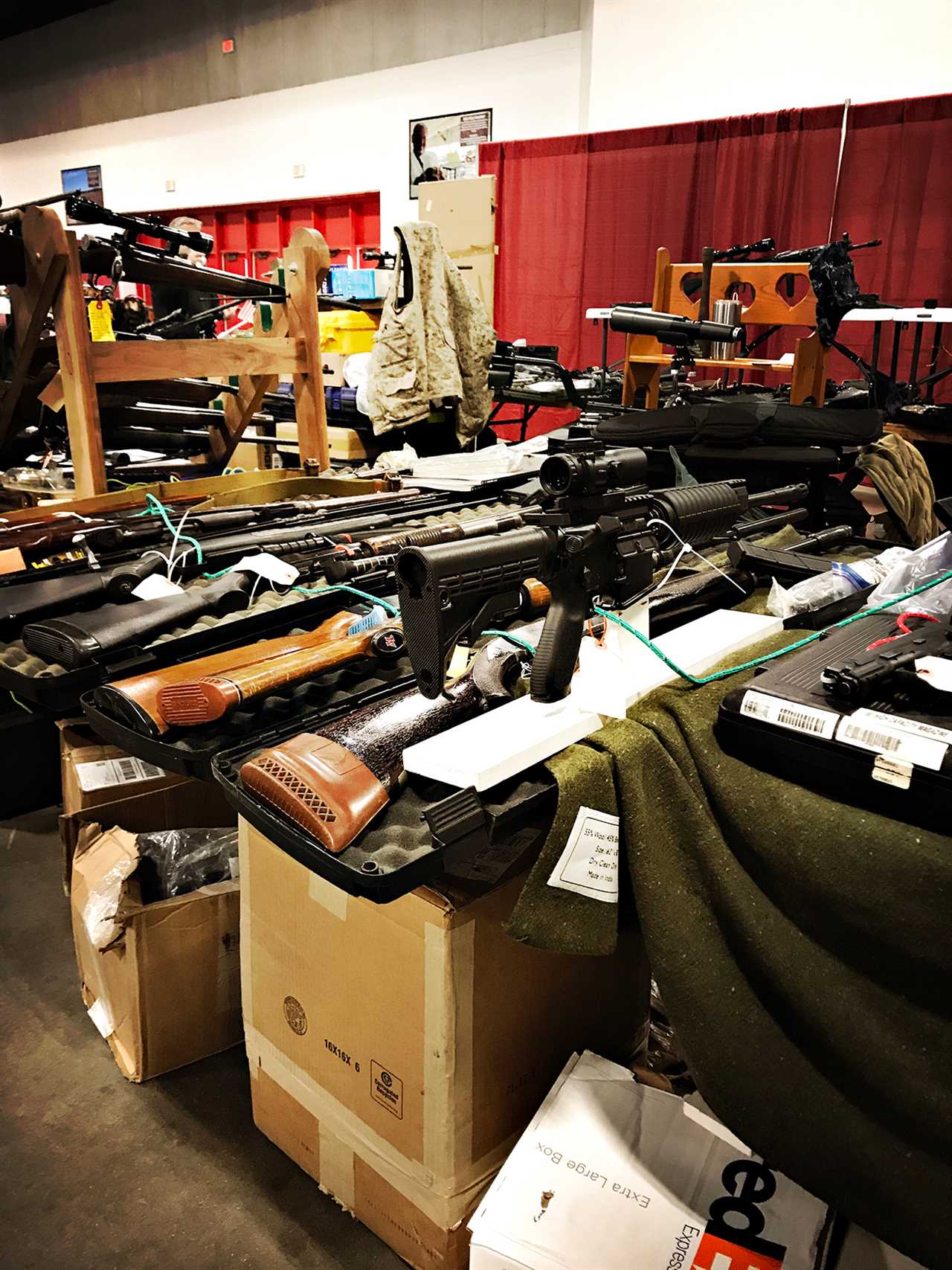
Guns on display in Louisville.
Adam Nemett
Back at the Louisville Survival Expo, when I’d asked Chris Begley about guns, I assumed he’d encourage me — here’s a lifelong Kentuckian, a gun-owner who first shot an AR-15 at age eight, who spent most of his archeological career in El Salvador and Honduras, countries with chart-topping homicide rates.
“In every situation I was in with armed bad guys,” Begley tells me, “my having a gun would’ve gotten me killed. If you have a gun, they just kill you and take your gun. You’re not going to Rambo it out with them. Even if you dispatch a few, it’s going to escalate until you lose…
“When you have a family, you don’t decide: ‘I’ve got six kids and the bad guys have five kids, so after we go back and forth, I’m going to have one kid left, so I win!’ No. You leave, with all six of your kids. You survive and start over, hopefully with likeminded people. It’s not the armed loner or militia team that survives. It’s the politician — the charismatic person who can talk to people and build a larger collective. That’s who survives.”
After we leave Bob’s bleak lecture at the expo center, Jason, John, and I, plus Chris Begley and his daughter Bella, head to Feast BBQ. Later we go to the quieter and wonderfully vibrant Spanish Fly Barbershop, the visual opposite of the Expo Center, to interview each other on camera about what we just experienced.
We recognize this was a bad prepper show, pretty bush league, but still. It was so damn sad. I’ve been to many expos, conventions and other subculture group hangs, for both business and pleasure. Everything from electrical distributor trade shows to military industrial conferences to Phish festivals to San Diego Comic-Con. Even at the work events, I always witness a certain amount of joy and camaraderie among the vendors and attendees. A shared language.
There is no joy in Louisville. Everyone seems to know each other, and many have clearly been on the same show circuit together for years. But they all talk shit or at least low-key distrust each other. One vendor with a booth full of two-handed weapons — AR-15s and larger-caliber machine guns — relishes pointing out a reasonably fresh bullet hole in the glass casing of the convention hall’s emergency fire hose. “Stupid motherfucker had his shit loaded in here and it went off,” he tells us. He then abandons his booth for three hours, leaving his firearms strapped to tables with those white zip ties.
I don’t buy a gun in Louisville. I don’t want to succumb to the obvious, and I don’t want to give anyone here my money. But I pass a booth of knives, and lock in on “The Tracker” blade — often regarded as the best bushcraft knife on the market, or maybe just the most popular after it was featured in the Benicio Del Toro movie, The Hunted.
It’s designed by Tom Brown, Jr., the actual Michael Jordan of the preparedness industry — a renowned survivalist, animal tracker, and author whose books I devoured as a 10-year-old. He learned from indigenous people to be a “coyote teacher” — to answer questions with questions, and to empower students to observe the world until they see it anew. His knife is hefty enough to use as a wood-cutting hatchet and fine enough to fashion snares. It can be an effective weapon. This feels like investing in skills rather than stuff. So yes, I buy a knife at a gun show.
Later that night, I’m at the Bob Weir concert, the one I have no business attending. The venue is gorgeous, an aptly named Louisville Palace. There are zero accidental bullet holes in the fire hose glass. People are drinking and dancing and singing and hugging. There is community. There is joy. I realize I’m comparing apples and oranges, but the thing is, I really prefer oranges.
It’s April 22th, 2021, officially two weeks after my second Moderna jab. I’m walking in the woods with my family, on a trail we started carving the day we went into lockdown.
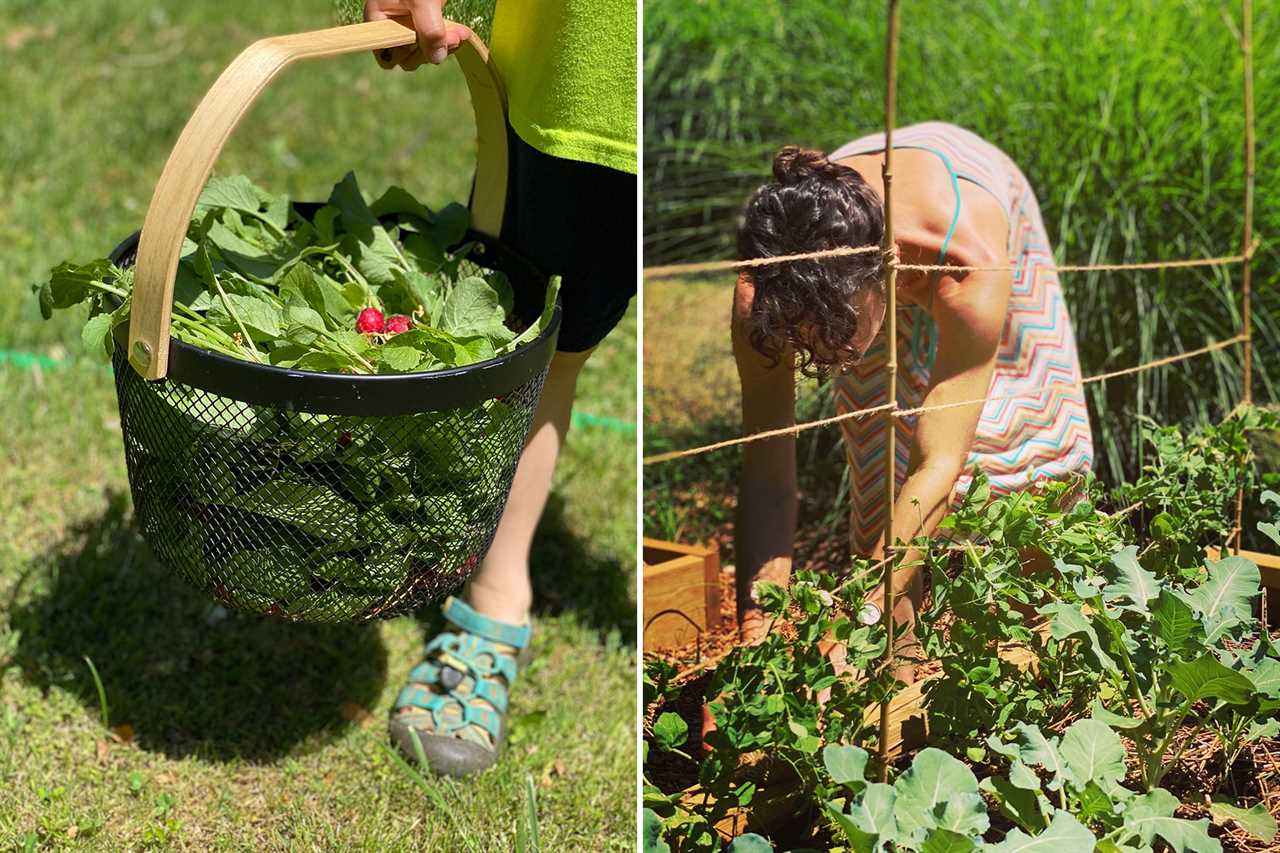
Some of the food harvested from the author’s home garden.
Adam Nemett
In the past year, our solar array has generated seven MWh of electricity (the carbon equivalent of eliminating five tons of coal or planting 75 trees). We’ve grown 17 kinds of fruits and vegetables, maybe 150 pounds of food (not nearly enough to feed our family, but it’s a start). My son and I are learning basic woodworking and knife skills (from homeschooling expert Christopher Hall, author of Common Arts Education), and Kate and I are reading books we never thought we’d read (like Tom Brown, Jr.’s Field Guide to Nature and Survival for Children).
Today, we’re walking our trails with a posterboard aerial map of our property. It’s coated in strips of clear packing tape, a makeshift DIY laminate allowing us to write and erase with black marker. This map is our Master Plan. We’re plotting our next moves, all the projects we each want to take on in the coming years. Here’s a representative sample of our priorities:
Mine: solar battery backup, rainwater cisterns, home brewing and fermenting, tea garden for caffeine.
Kate’s: turn pond area into amphitheater, make actual walkway to front door, build a rain garden.
Our son’s: greenhouse, hoop house, treehouse, chicken house, log cabin in the woods, water garden.
Our daughter’s: statue of a frog like this bear, macaroni and cheese with hair like mine, a whole history of sandwiches, Poopie Elizabeth, fairy garden.
The whole country has now gotten a taste of sheltering-in-place, a yearlong, nationwide bug-in. Under such circumstances, my family is among the very privileged. Covid has destroyed so many lives, and yet it’s been a chrysalis for us. It’s shown us how much more transformation is possible.
Preparations for a short-term disaster have transitioned to longer-term focus on adaptation. A month from now, Charlottesville gas pumps will run dry after the cyberhacking of the Colonial Pipeline, the latest reminder of our vulnerable energy infrastructure and our complete dependence on it. It will also be the latest reminder of apocalyptic hoarding — the selfish pricks have no problem filling two dozen spare gas tanks despite a 30-car line behind them. If the last year is any indication of what could happen, we all need to become more self-reliant while also capable of helping others.
This works better if everyone is doing it. Much like vaccinations, we’re a safer neighborhood and community if everyone has taken steps to be prepared for emergencies. If all your neighbors have a stash of emergency food, there’s less chance for scarcity and panic when the SHTF. We already have a great community of skilled friends here in Charlottesville and on the internet teaching us things we don’t yet know how to do, and the goal is to share this knowledge with friends, family, and neighbors. Without its former stigma and mandate for ultra-secrecy, prepping becomes a joint effort — a more collaborative approach to TEOTWAKI.
With that in mind, I dig up a Facebook post from March 14th, 2020. I’d shared it from Chris Begley, who shared it from University of Kentucky’s Students Against Social Injustice page, who’d in turn shared it from folks in Central Ohio and London. It’s a template for any and all to use. So, I adapt it once again and send an email to my neighborhood listserv, an alternate version of Bob’s Five Stages of Preparedness, and feel free to try this with your own community:
Paragraph 1 is about Recognizing Our Isolation. But, like, in a totally chill way.
“Subject: A Neighborly Invitation: Hello from [names] at [address]. We’ve lived here since [year] but we don’t know most of you. Given the past year, we thought this might be a good time to change that!”
Paragraph 2 acknowledges that everyone experienced 2020 differently. “Many of us have support systems nearby, who become essential in challenging times. Others do not. We’ve been thinking about ways to adapt and prepare for future situations, including predictable things like extended power outages or, hey, even the current gas shortages.”
3) invites them to join our “hyper-local support network, a backup system of mutual aid.”
4) points them to fill out a survey about their skills and interests, what help might they need or be able to give.
5) is about Our Shared Future. “This neighborhood was developed as an ‘intentional community,’ and we can become more intentional as we move forward.” And I crib some language from Bob Gaskin here. “If unexpected events occur again, nobody should feel like an island in the midst of the storm. Rather than simply returning to the status quo, we look forward to forming a new, tighter-knit community with you all.”
I hit send, sign off. In the morning there are dozens of responses, from neighbors aged 31 to 83. They humbly offer skills, resources, basic labor, rides to the pharmacy, meals they can cook. And after a year spent fearing the worst-case scenarios, a new endgame becomes clear: if the Shit Hits The Fan, there’s a best-case scenario worth imagining too.
Adam Nemett is the author of WE CAN SAVE US ALL, one of Booklist’s “Top 10 Debut Novels of 2018.” His work has been published, reviewed and featured in The New York Times Book Review, Salon, Lit Hub, Fatherly, Variety, The New Yorker and C-Ville Weekly.

